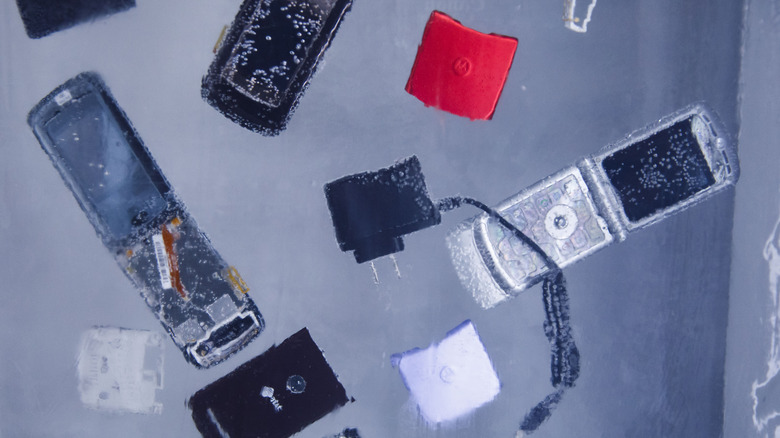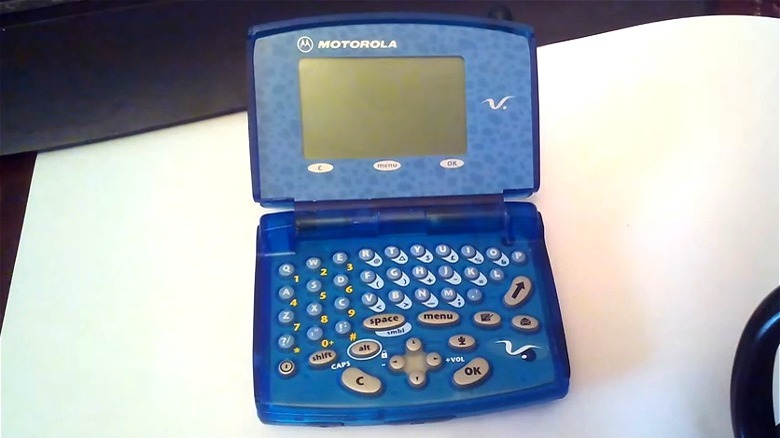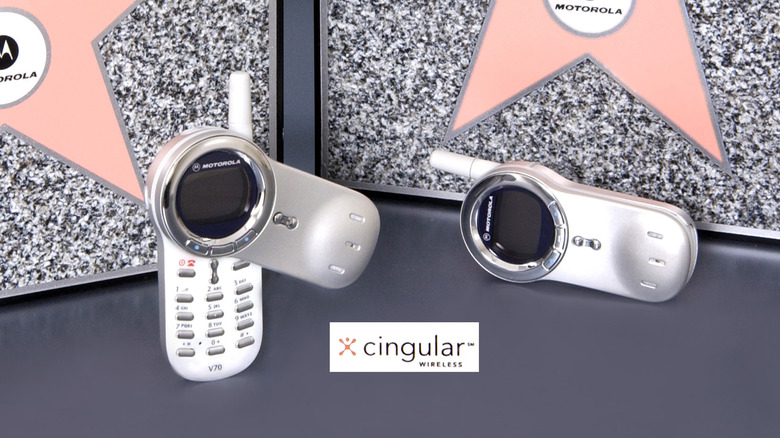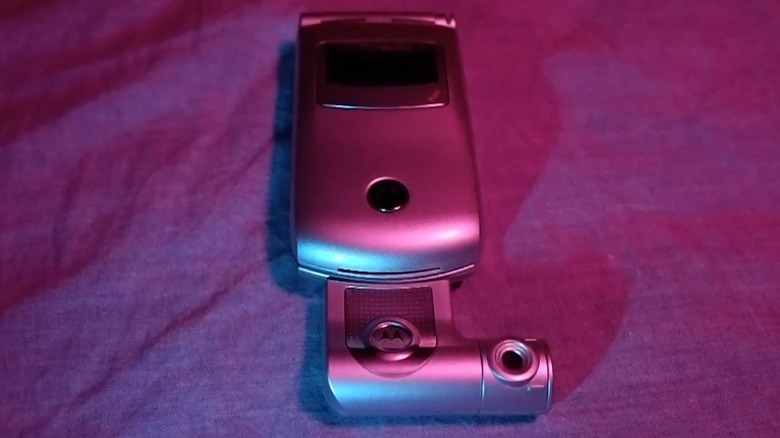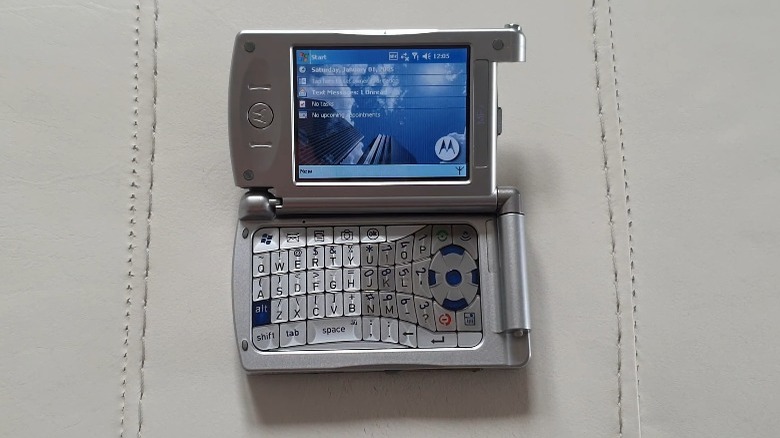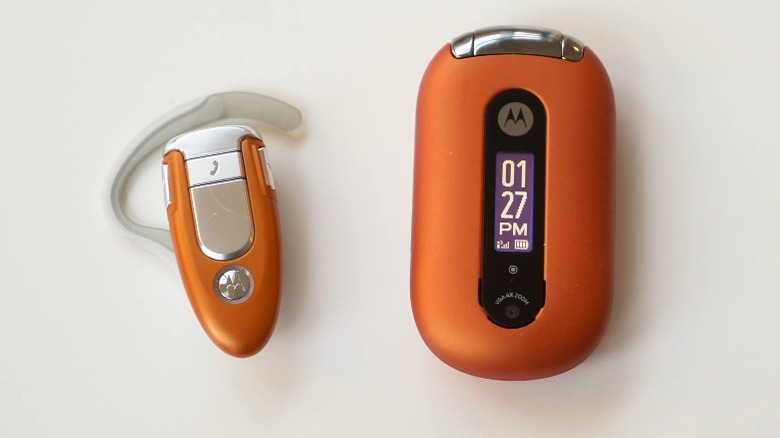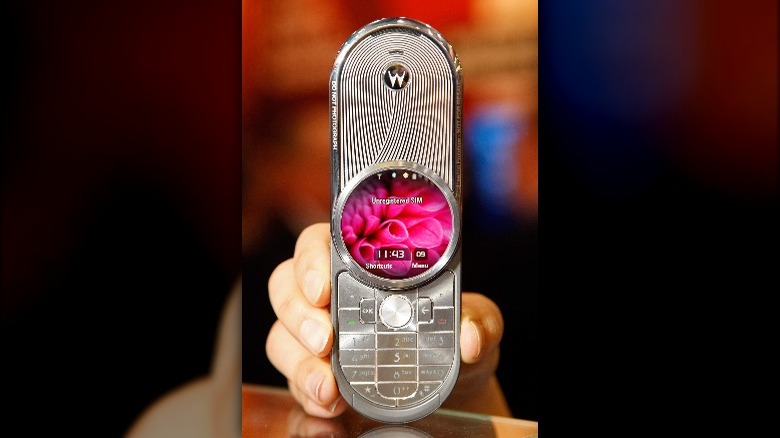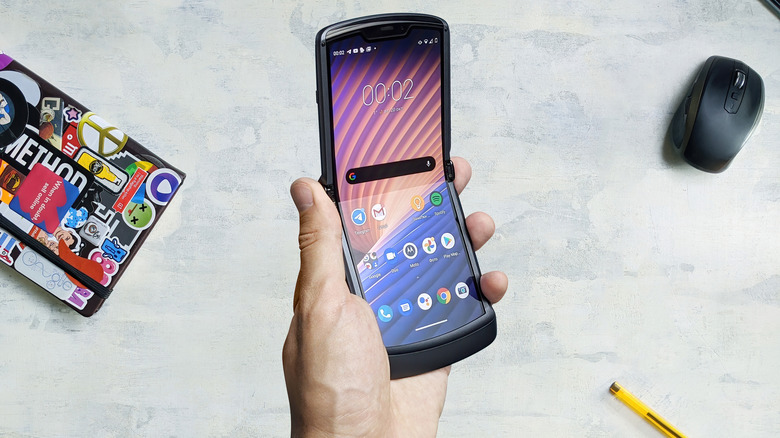7 Weird Motorola Phones You Forgot Existed (And May Be Better Off Forgotten)
Motorola made history with the DynaTAC 8000X, the first commercial cell phone. Inventor Martin Cooper's first call on the DynaTAC to Bell Laboratories was a pivotal moment in cell phone history. Despite its hefty 1.7-pound weight and limited talk time of only one hour, the DynaTAC paved the way for rapid advancements in phone design and functionality.
After the DynaTAC but before the rise of smartphones, cellphone designs varied wildly between models, and Motorola was no exception. As mobile phone technology evolved, Motorola continued to experiment with different form factors and components.
While Motorola made great strides in the development of mobile phones, not every model was a winner. In fact, some of its phones were downright strange. From phones that looked like sci-fi movie props to bizarre devices with questionable features, these phones are a reminder of the whimsical course of advancing technology.
Some of these phones are a nostalgic trip down memory lane — such as phones combined with PDAs — while for others are downright puzzling examples of niche products that never quite found their audience. Here are seven of the weirdest Motorola phones that you may have forgotten existed — phones that are perhaps better off forgotten.
Motorola V.box V100 (2000)
The Motorola V.box V100 was designed at an unfortunate time. The V100 came onto the market in the year 2000, the growing pain years for cellphone design when consumers were sick of feeding their Tamagotchis, in the grip of Y2K panic, and worrying about technology taking over.
The V100 tried to bridge the gap between previous phone designs by rejecting bulky models like the DynaTAC and StarTAC. Instead, the V100 was supposed to add more functionality to smartphones in a smaller, more compact package.
It offered a full QWERTY keyboard, a revolutionary feature for a phone in 2000. It also had memo recording and voice dialing capabilities, as well as the ability to browse text-based websites. The V100 was the precursor to smartphones, paving the way for many of the features that have become standard in today's phones.
The V100 had a clamshell design in a sem-transparent case with a monochrome display. Unfortunately, the design still looked like it came from a '90s Toys-R-Us. You could put the V100 and the '90s Dear Diary toy together on a shelf and they would look right at home next to each other.
Motorola V70 (2002)
The Motorola V70 was a phone ahead of its time, but not necessarily in a good way. Released in 2002, it was marketed as a "fashion" phone due to its unique design and customizability. The phone had a swiveling mechanism that would hide the neon backlit keypad when closed, which was definitely a cool feature at the time. However, it quickly became apparent that the swiveling mechanism was more of a gimmick than a practical design element.
While the decorative silver bezel frame could be swapped out for other flashy colors, the Motorola V70 lacked many standard phone features, such as internet connectivity and a built-in camera. Its white-on-black display had a low resolution of only 96 x 64 pixels, making it difficult to read texts or view pictures.
The phone's high price tag would set you back more than $400 (nearly $700 in today's money) while its impractical design meant it did not sell well, and it is now mostly remembered as a relic of the early 2000s. While unique, the V70 was ultimately a forgettable phone that serves as a reminder of how companies are pushed to continually innovate and capture consumers' attention with cutting-edge design.
Motorola T720i (2002)
Phone accessories like a keychain, wrist strap, or lanyard can be fun and functional. In 2002, Motorola was also experimenting with accessories, but they weren't cute cases.
The T720i, which was an alternate version of the T720, was one of the early phones to experiment with integrating a camera into a cellphone. The T720i differed from the T720 mainly in that it came equipped with a larger battery and a camera accessory. Rather than housing the camera in the phone itself, the T720i came with a detachable camera that could be plugged into the phone's charging slot and used to take pictures. With it plugged in you could watch the grainy images of 2002 come to life on its one-inch screen.
A separate camera attachment was a bad idea because the digital cameras that existed at the time had a much higher resolution than the attachable camera for the T720i. The tiny camera was easily lost, it took six clicks and a bit of screen lag to take one picture, and the need to remember to bring and attach it to the phone defeated the purpose of having a camera phone for quick picture-taking on the go.
Not only camera phones but also speaker or flashlight attachments were available for the T720i, as highlighted in their commercial. The included belt holster further emphasized the impracticality of the design. There simply wasn't enough belt space to hold all of them — unless you had a Batman-sized utility belt.
Motorola MPx (2004)
The Motorola MPx is a prime example of what happens when you try to do too much. On paper, this cellphone had everything you'd want from a phone and a PDA.
Some of the features it included were Wi-Fi compatibility, a full QWERTY keyboard, Bluetooth, a camera, and a touchscreen. These are all features that are still standard on every smartphone today, but unfortunately for the MPx, the technology to make all these features work together simply wasn't there yet.
The MPx could unfold in two ways. One axis opened like a regular flip phone and the other could open sideways to use the full keyboard. While this all sounds great, the keyboard itself was too small to comfortably use, and with multiple orientations, the numbers and keys all had a slight slant to them that felt crowded.
The touchscreen was large for the day but smaller than what users today would be accustomed to. Operating the screen required the use of the included stylus pen for any accurate navigation. All of these features combined created a rather crowded and cumbersome user interface.
Motorola PEBL (2005)
The Motorola PEBL was a sleek mid-tier phone that everybody wanted to get their hands on, thanks in part to clever design and marketing. Its most distinctive feature was its special ergonomic feel, which was no accident. The PEBL's designers drew inspiration from flat, smooth river rocks, covering the phone in a rubber material that felt soft to the touch and fit in the palm of your hand.
Another satisfying feature of the PEBL was its hinge design. While most flip phones need to be pried apart to reveal a keyboard, the PEBL featured a unique hinge that could be opened effortlessly with the press of a thumb. By pressing down on the cover, the hinge would unlock and the phone would snap open with a spring assist. When you were done making your call or changing your MIDI ringtone, you could simply close the phone and magnets would lock the hinge into place.
The Motorola PEBL, although once highly coveted, has been largely overshadowed by more technologically advanced mobile devices. Despite its distinctive design elements, the phone's limited capabilities and lack of modern features have rendered it largely forgotten in today's mobile market, leaving it in the discarded pile of weird Motorola phones that have failed to stand the test of time.
Motorola AURA (2008)
The Motorola AURA was one of the last truly cool flip phones to arrive before smartphones standardized the look of modern-day phones. Released in 2008, the Motorola AURA arrived at a time when smartphones were gaining popularity, with the first iPhone release just a year earlier marking the beginning of the end for flip phones.
However, the AURA didn't necessarily flip. It rotated around a circular screen in the center of the phone. One of the many joys of the flip phone era was the fact that some phones were sort of like really expensive fidget spinners. The AURA was a particular joy, as it had a spring assist that rotated open, and a window on the back revealed the Swiss-designed gear system the rotation was built on.
The AURA's metal case was a standout design feature that made it feel more substantial than most phones of its time. It marked the end of an era where each phone model was built on a unique frame, which often resulted in a higher price tag. In 2008, the standard AURA cost $2,000, which is a huge sum for any phone, even by today's smartphone standards.
For those who wanted something truly unique, there was the AURA Diamoniqe Limited Edition — which is just as ostentatious as it sounds. This version of the phone was adorned with 90 diamonds valued at one karat. Considering how quickly phones go out of style, it seemed a bit over the top.
Motorola Razr (2019)
The Motorola Razr V3 was one of the best phones the company ever made and the peak of cool when it was first released in 2004. The design was metallic, shiny, sleek, and razor-thin. It had an impressive host of features and ruled the schoolyard when it came to flip phones.
Back in the early 2000s, the Razr was considered an innovative phone. Fast forward to 2019, and Motorola decided to revive the Razr as a smartphone with its thin folding design for a new generation. The Motorola Razr hit the market stumbling with a $1,500 price tag, lack of durability, and functionality that was mediocre at best.
To make matters worse for the debut of the 2019 Razr, the Samsung Galaxy Z Flip was released one year later in 2020, which absolutely blew the Razr out of the water in terms of specs. The Galaxy Z Flip somehow managed to have better specs, a larger screen, and a smaller form factor, leaving the new Razr in the dust.
Motorola hasn't given up on the Razr, though. The company redesigned the Razr in 2022, upgrading its hardware to compete with Samsung. Despite the redesign, the phone never got off the ground with an official global launch. Nevertheless, Motorola is still pursuing another redesigned Razr. Leaked Motorola Razr renders of the 2023 version garnered some serious hype for the foldable clamshell phone, but only time will tell if it will live up to the legacy of the Razr brand.
